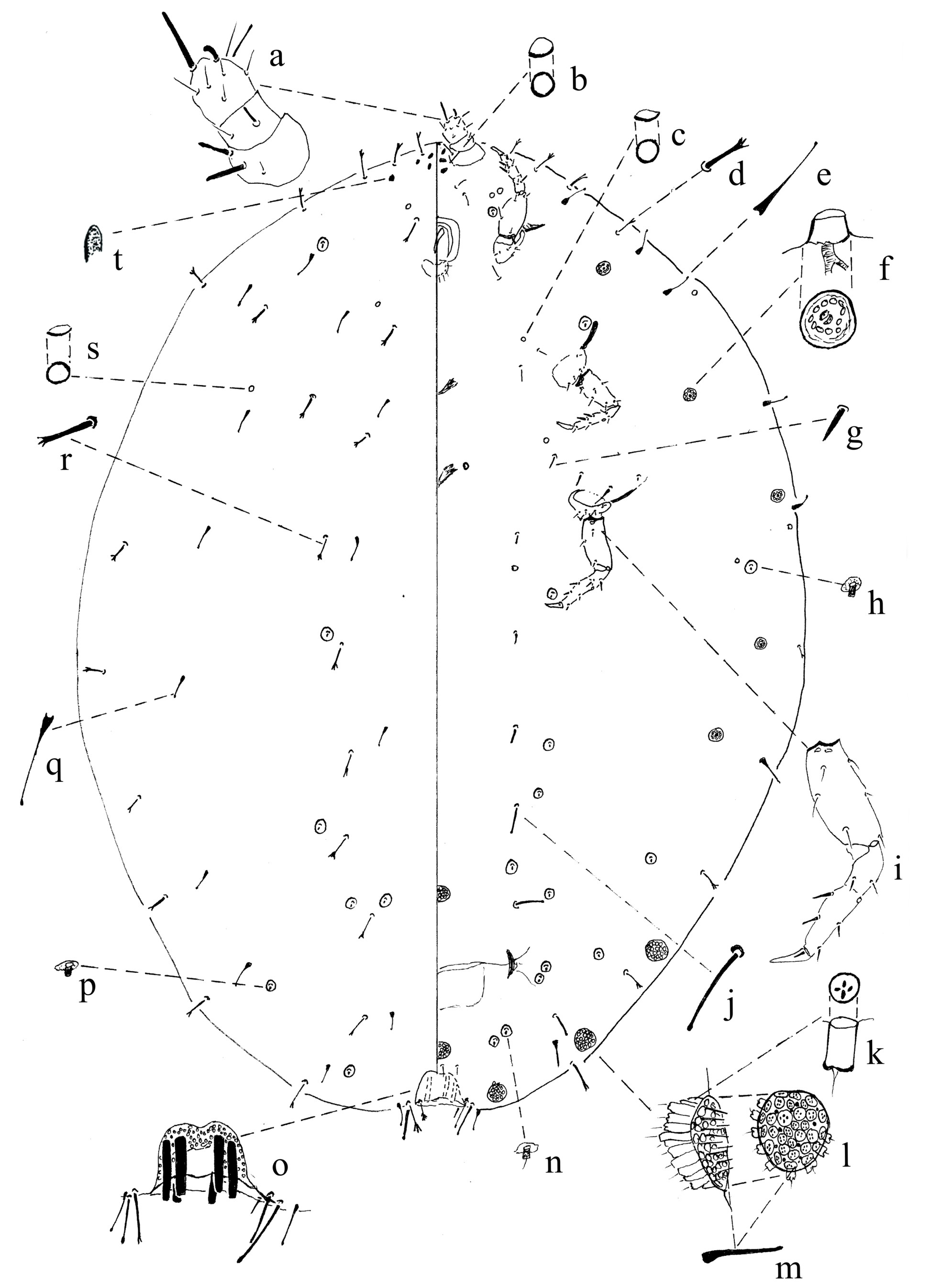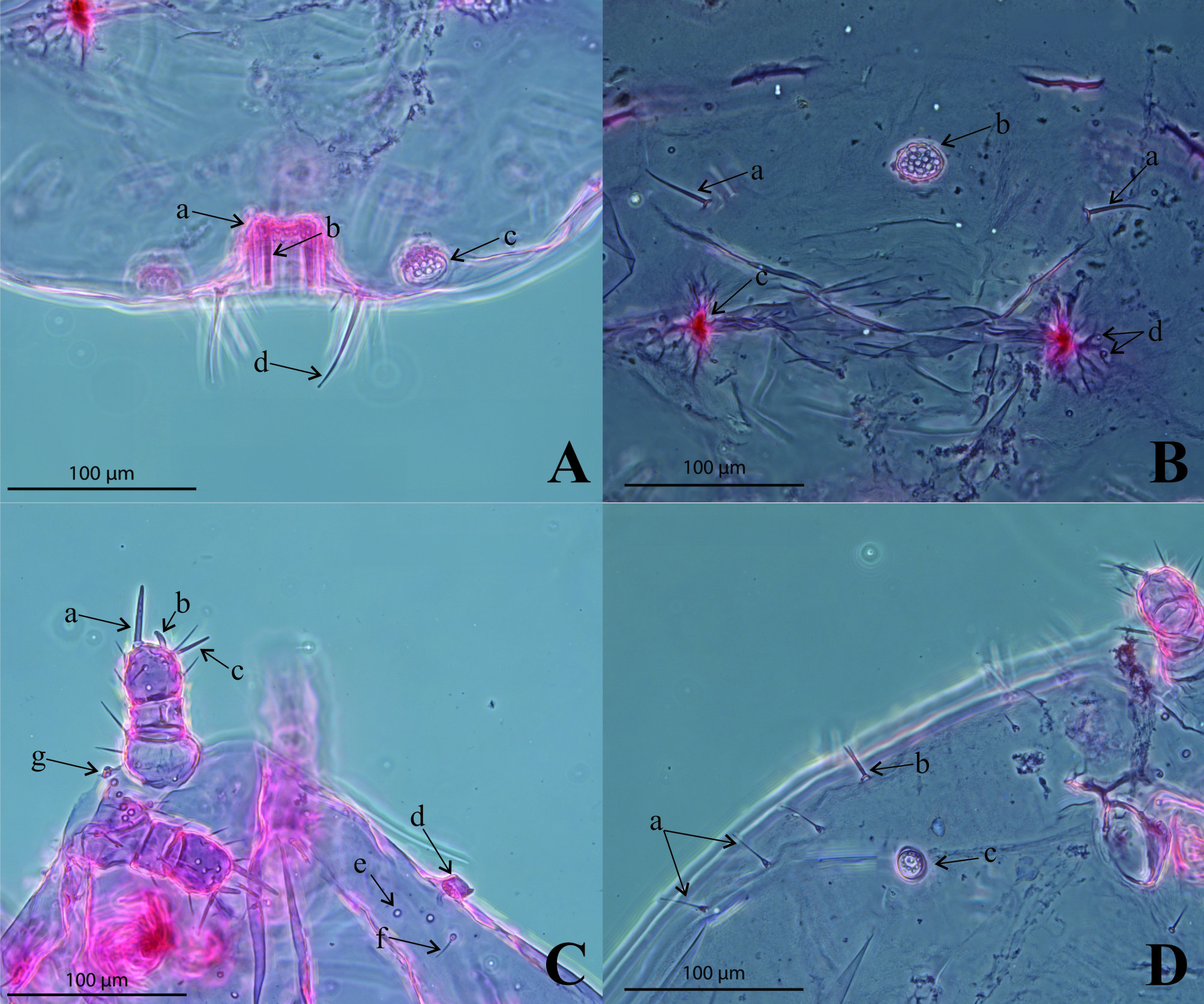Valid Names Results
Barbenigma boscus Powell & Miller, 2024 (Ortheziidae: Barbenigma)Nomenclatural History
- Barbenigma boscus Powell & Miller 2024: 309. Type data: NEBRASKA: Furnas Co., Arapahoe, junction of Highway 6 and 46 (40.308056, -99.863611), on roots of Bromus inermis (Poaceae) on roadside, 8 July 2023, coll. D.R. Miller and B.D. Denno; FSCA.. Holotype, female, by original designation Type depository: Gainesville: Florida State Collection of Arthropods, Division of Plant Industry, Florida, USA; Washington: United States National Entomological Collection, U.S. National Museum of Natural History, District of Columbia, USA; accepted valid name Notes: Paratypes: 2 adult ♀♀ with same data as holotype mounted singly on 2 slides; FSCA, USNM. Illustr.
Common Names
Ecological Associates
Hosts:
Families: 1 | Genera: 1
- Poaceae
- Bromus inermis | PowellMiKe2024
Geographic Distribution
Countries: 1
- United States
- Nebraska | PowellMiKe2024
Keys
- PowellMiKe2024: pp.312 ( Adult (F) ) [Key to species of Carayoneminae (revised from Kozár & Konczné Benedicty 2000)]
Remarks
- Systematics: Barbenigma boscus differs from B. biza in having: spines occurring singly on the dorsal abdomen; body setae with capitate apices; spines on the dorsum long, 22–31 µm long; and dorsal fimbriate setae long, 26–39 µm long (Powell et al. 2024).
- Structure: Slide-mounted holotype 1.18 mm long, 0.90 mm wide, with several large eggs retained inside body; paratypes (n=2) 1.04−1.29 mm long, 0.74 mm wide; body rotund oval. Dorsum with robust fimbriate setae, with up to five tines, sparse, one present marginally on each abdominal segment, one present medially on each abdominal segment, roughly in single longitudinal submedial line on thorax and head, longest seta on medial area of abdomen 26 µm long (paratypes 30–36 µm), longest seta on margin 31 µm long (paratypes 36–39 µm), longest seta on head 25 µm long (paratypes 25–27 µm). Anal ring wrapping around margin, invaginated in pocket, forming setal basket, with ring of pores, bearing six robust anal-ring setae each with truncate apices. Venter with two pairs of thoracic spiracles, spiracular openings projecting above derm by about 7 µm, three pairs of abdominal spiracles, spiracular openings flush with derm (Powell et al. 2024).
Illustrations
Citations
- PowellMiKe2024: description, diagnosis, illustration, key, morphology, nymph, phylogeny, taxonomy, 309




